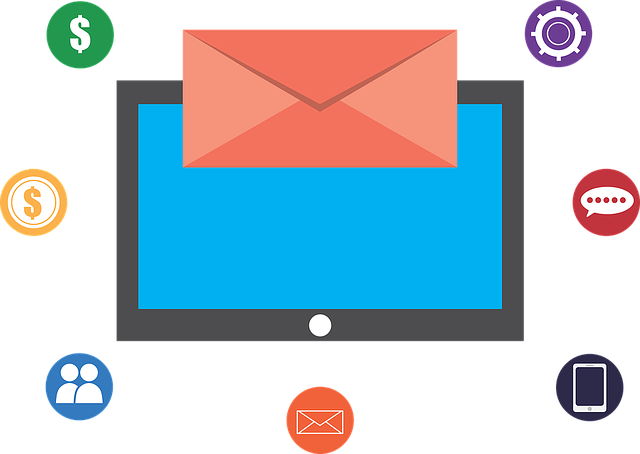In today’s digital landscape, businesses are constantly searching for the most effective strategies to reach and engage their target audience. Two popular methods that often come to mind are email campaign management and social media marketing. Both approaches have their own unique advantages and drawbacks, making it crucial for businesses to carefully consider which one will yield better results for their specific goals.
When it comes to email campaign management, the ability to directly reach a customer’s inbox is a powerful tool. Through personalized and targeted content, businesses can generate leads and drive conversions.
On the other hand, social media marketing allows for broader reach and engagement, leveraging the power of platforms like Facebook, Instagram, and Twitter.
In this article, we will explore the pros and cons of both email campaign management and social media marketing, and delve into the specific ways they can help businesses generate leads and build strong customer relationships. By analyzing the data and statistics, we aim to provide you with the insights needed to make an informed decision on which strategy will deliver the best results for your business.
Key Takeaways
- Email campaigns have a higher conversion rate compared to social media marketing.
- Email campaign automation saves time and increases efficiency.
- Building an engaged subscriber list and creating compelling content are key to generating leads with email campaigns.
- Social media marketing allows for broader reach and engagement on platforms like Facebook, Instagram, and Twitter.
Pros and Cons of Email Campaign Management
Email campaign management has its advantages and disadvantages, so let’s dive into the pros and cons of this powerful marketing tool.
When it comes to email campaign effectiveness, studies have shown that it has a higher conversion rate compared to social media marketing. With email campaign automation, you can easily segment your audience, personalize content, and schedule campaigns in advance. This level of automation saves time and increases efficiency. Additionally, email campaigns allow you to directly reach your target audience’s inbox, increasing the chances of your message being seen.
However, one disadvantage of email campaign management is that it can sometimes be perceived as intrusive or spammy, leading to lower open rates.
Now let’s explore the pros and cons of social media marketing, which offers its own set of benefits and challenges.
Pros and Cons of Social Media Marketing
Don’t even think about underestimating the power of social media marketing – it’s a game-changer for your business!
With the impact of influencer marketing on social media, your brand can reach new levels of visibility and engagement. Through partnerships with influential individuals, you can tap into their vast audience and gain credibility and trust.
Additionally, social media marketing allows you to gather valuable data and insights through analytics. You can track metrics such as reach, engagement, and conversions to improve your strategies and target your audience effectively. By leveraging these analytics, you can optimize your campaigns and ensure that you’re getting the most out of your marketing efforts.
Transitioning into the next section, generating leads with email campaigns, let’s explore another effective approach to growing your business.
Generating Leads with Email Campaigns
To generate leads with email campaigns, you need to focus on two key areas: building an engaged subscriber list and creating compelling and relevant content.
Engaged subscribers are more likely to open your emails, click on your links, and ultimately convert into customers. By creating content that is valuable and tailored to your target audience’s needs and interests, you can capture their attention and encourage them to take action.
To build an engaged subscriber list, you can use various strategies such as offering incentives for signing up, providing exclusive content or discounts, and regularly communicating with your subscribers to keep them engaged.
Once you have a strong subscriber base, it’s important to create compelling and relevant content. This means understanding your target audience and their pain points, and creating content that addresses those needs.
By following these strategies, you can increase the effectiveness of your email campaigns and generate more leads for your business.
Building an Engaged Subscriber List
Building an engaged subscriber list is the key to success in both email campaign management and social media marketing. To achieve this, you need to implement effective list segmentation strategies and employ tactics to optimize email opt-ins. By segmenting your list based on demographics, interests, and past interactions, you can deliver personalized content that resonates with your audience. Additionally, using enticing lead magnets, such as free ebooks or exclusive discounts, can incentivize users to subscribe to your email list.
Here’s a table showcasing some list segmentation strategies and effective email opt-in tactics:
| List Segmentation Strategies | Effective Email Opt-In Tactics |
|---|---|
| Demographics | Offer exclusive discounts |
| Interests | Provide valuable content |
| Past interactions | Use compelling call-to-action |
Building an engaged subscriber list sets the foundation for creating compelling and relevant content that will drive conversions.
Creating Compelling and Relevant Content
Crafting captivating and relatable content is the key to captivating your audience and driving conversions. To create compelling and relevant content, you need to have a solid content strategy in place. Here are four essential elements to consider:
-
Know your audience: Understand your target audience’s demographics, interests, and pain points. Tailor your content to resonate with them.
-
Provide value: Offer informative and useful content that solves problems or addresses their needs. This will keep your audience engaged and coming back for more.
-
Be authentic: Show your brand’s personality and voice in your content. Authenticity builds trust and helps you connect with your audience on a deeper level.
-
Incorporate multimedia: Use a mix of text, images, videos, and infographics to make your content more visually appealing and engaging.
By following these content strategies, you can increase audience engagement and drive conversions.
Speaking of driving conversions, let’s now explore how social media marketing can help you achieve that goal.
Driving Conversions with Social Media Marketing
Boost your conversion rates through social media marketing by engaging your audience with compelling content and irresistible offers.
Social media advertising allows you to target specific demographics and reach a wider audience, increasing the likelihood of driving conversions.
Utilize eye-catching visuals and persuasive messaging to grab attention and entice your followers to take action.
Collaborating with social media influencers can also amplify your reach and credibility, as their followers trust their recommendations.
Monitor data analytics to track the performance of your campaigns and make data-driven adjustments to optimize conversions.
As you build a strong foundation with social media marketing, you can seamlessly transition into the subsequent section about building customer relationships through email campaigns, nurturing your leads and keeping them engaged.
Building Customer Relationships through Email Campaigns
Strengthening customer relationships through email campaigns is like nurturing a garden, carefully tending to each lead and cultivating a sense of trust and loyalty.
Email campaigns provide a unique opportunity for personalized communication, allowing businesses to tailor their messages to individual customers. This personalized approach not only increases customer retention but also fosters a sense of connection and engagement.
By sending targeted emails based on customer behavior and preferences, businesses can create a more meaningful and relevant experience for their customers. Furthermore, email campaigns enable businesses to track and analyze customer responses, allowing for continuous improvement and optimization.
However, building customer relationships through email campaigns is just one piece of the puzzle. To fully maximize customer engagement, it’s essential to incorporate social media marketing strategies that complement and enhance the personalized communication established through email campaigns.
Building Customer Relationships through Social Media Marketing
Expanding customer relationships through social media marketing is like building a bustling community, with customers actively engaging, sharing, and connecting with businesses in a vibrant online space. Social media engagement allows businesses to foster customer loyalty by creating personalized interactions and building a sense of community. According to a study by Sprout Social, 70% of customers are more likely to recommend a brand to others if they have a positive experience on social media. Furthermore, a report by HubSpot found that companies that engage with their customers on social media have higher customer retention rates. Social media platforms also provide valuable data and analytics, allowing businesses to track customer behavior and preferences, enabling them to tailor their marketing strategies accordingly. By leveraging the power of social media, businesses can strengthen customer relationships and ultimately drive better results.
| Benefits of Social Media Engagement |
|---|
| Increased brand visibility |
| Enhanced customer loyalty |
| Improved customer satisfaction |
Frequently Asked Questions
What are the key differences between email campaign management and social media marketing?
You want to know the key differences between email campaign management and social media marketing? Well, let’s dig in.
When it comes to email campaigns, the pros include direct communication and high conversion rates. However, cons may include lower engagement and the risk of ending up in the spam folder.
On the other hand, social media marketing offers a wider reach and better engagement, but it can be time-consuming and may not always result in immediate conversions.
To ensure success, it’s important to follow best practices for both strategies.
How can email campaign management and social media marketing complement each other in a marketing strategy?
To maximize engagement and leverage both email campaign management and social media marketing, you can integrate them in your marketing strategy.
Start by using social media platforms to promote your email campaigns and encourage followers to subscribe. Additionally, include social media icons in your emails to drive traffic to your social media profiles.
By combining these efforts, you can increase audience interaction and reach a wider audience.
To measure success, track metrics such as click-through rates, conversion rates, and social media engagement to analyze the effectiveness of your combined efforts.
Which platform, email campaign management or social media marketing, is more cost-effective for small businesses?
If you’re a small business looking for cost-effective marketing strategies, let’s compare email campaign management and social media marketing.
When it comes to cost, email campaigns have the upper hand. With lower expenses for content creation and distribution, email marketing offers a higher ROI compared to social media.
According to research, for every dollar spent on email marketing, the average return is $42, while social media yields only $17.
So, if cost-efficiency is your priority, email campaign management is the way to go.
How can email campaign management and social media marketing be used to target different demographic groups?
To effectively target different demographic groups, you can employ various strategies in email campaign management and social media marketing.
In email campaigns, segment your audience based on demographics and tailor content accordingly. Use personalized subject lines and dynamic content to increase engagement.
With social media marketing, leverage platforms’ targeting features to reach specific demographics. Conduct A/B testing to determine which approach yields better results for each target group.
By employing these targeting strategies, you can maximize the effectiveness of both email campaign management and social media marketing.
Can email campaign management and social media marketing be integrated with other marketing channels for a more comprehensive approach?
Cross channel optimization is crucial for a comprehensive approach to marketing. By integrating email campaign management and social media marketing, you can maximize the synergy between these channels.
Leveraging customer data allows you to personalize and target your marketing efforts effectively. This integration enables you to reach a wider audience, strengthen brand visibility, and improve customer engagement.
With a data-driven approach, you can achieve better results and drive higher conversions across multiple marketing channels.
Conclusion
So, there you have it! After examining the pros and cons of email campaign management and social media marketing, it’s clear that both strategies have their strengths and weaknesses.
While email campaigns may be more effective in generating leads and building customer relationships, social media marketing excels in driving conversions.
Ultimately, the choice between the two depends on your specific goals and target audience. Remember, "the proof is in the pudding," and the data shows that both approaches can yield impressive results.
It’s time to take action and choose the strategy that will best propel your business forward.








